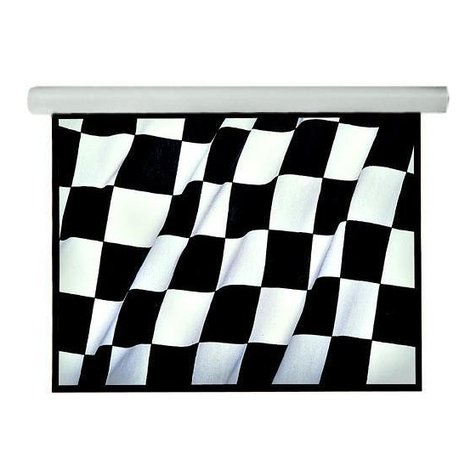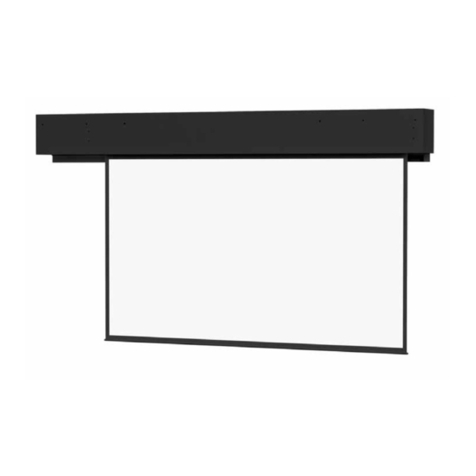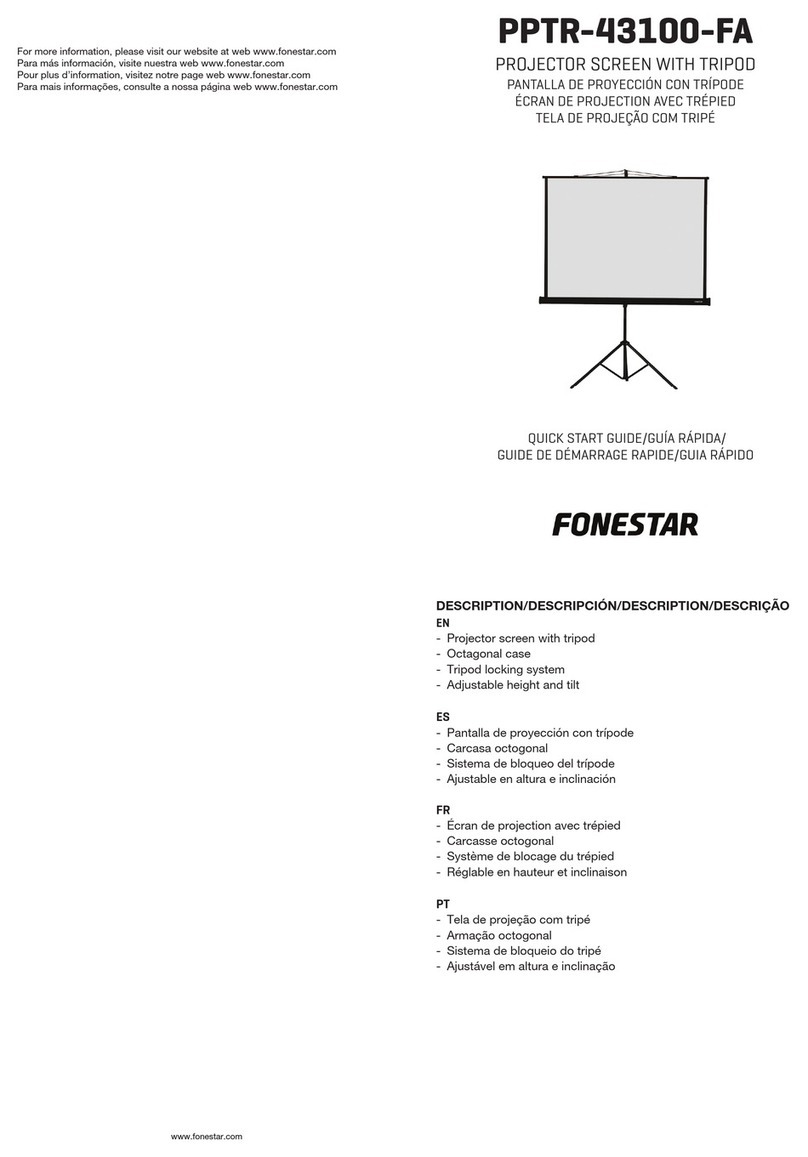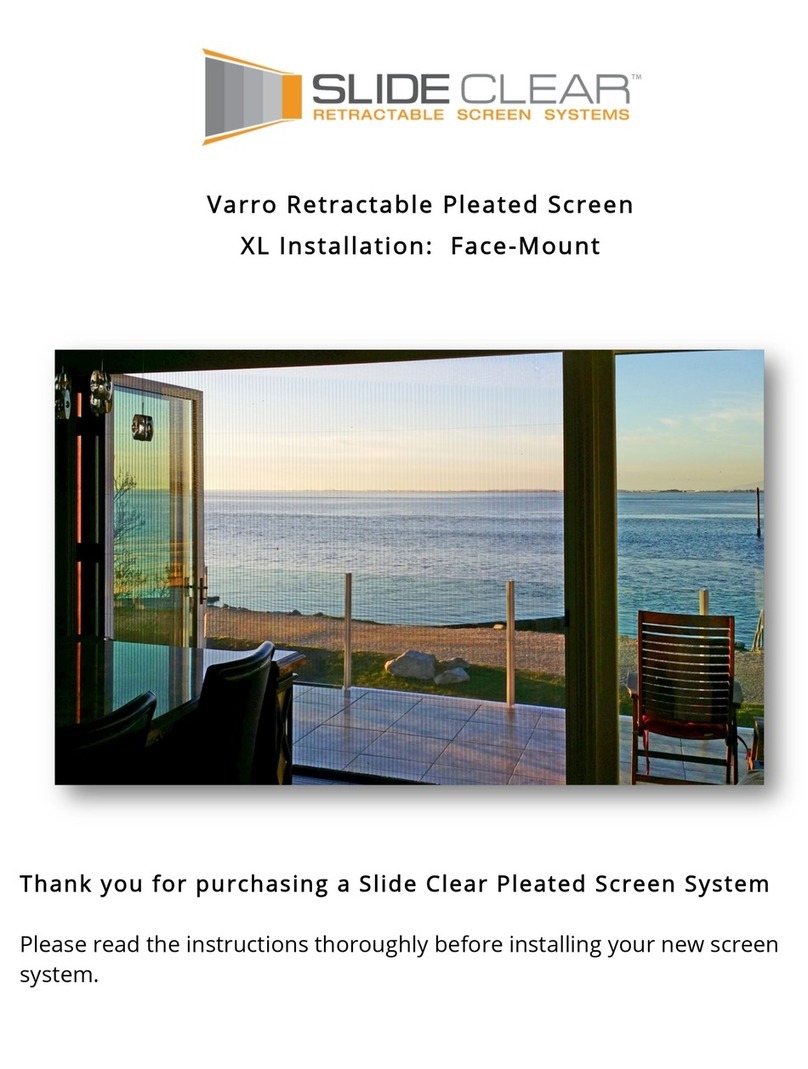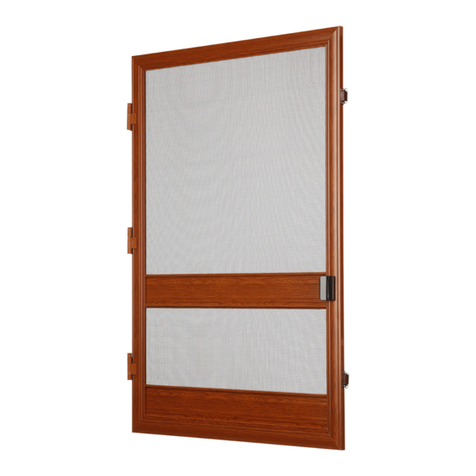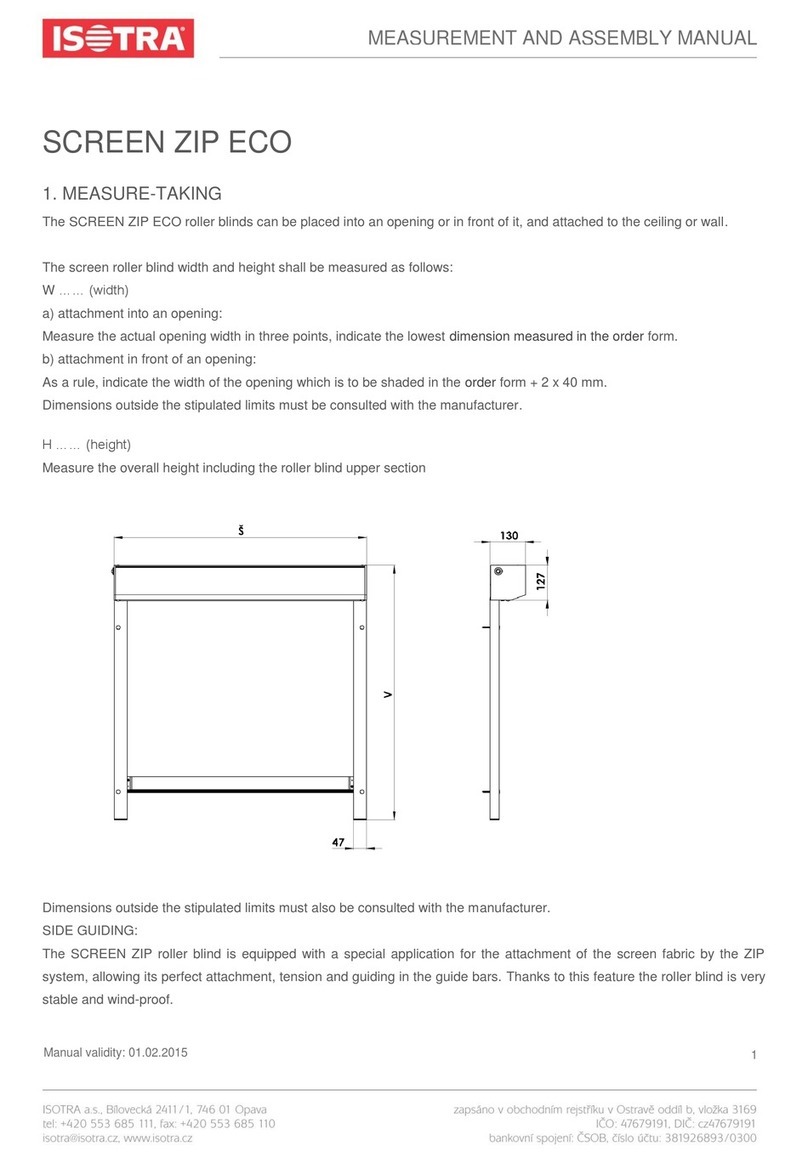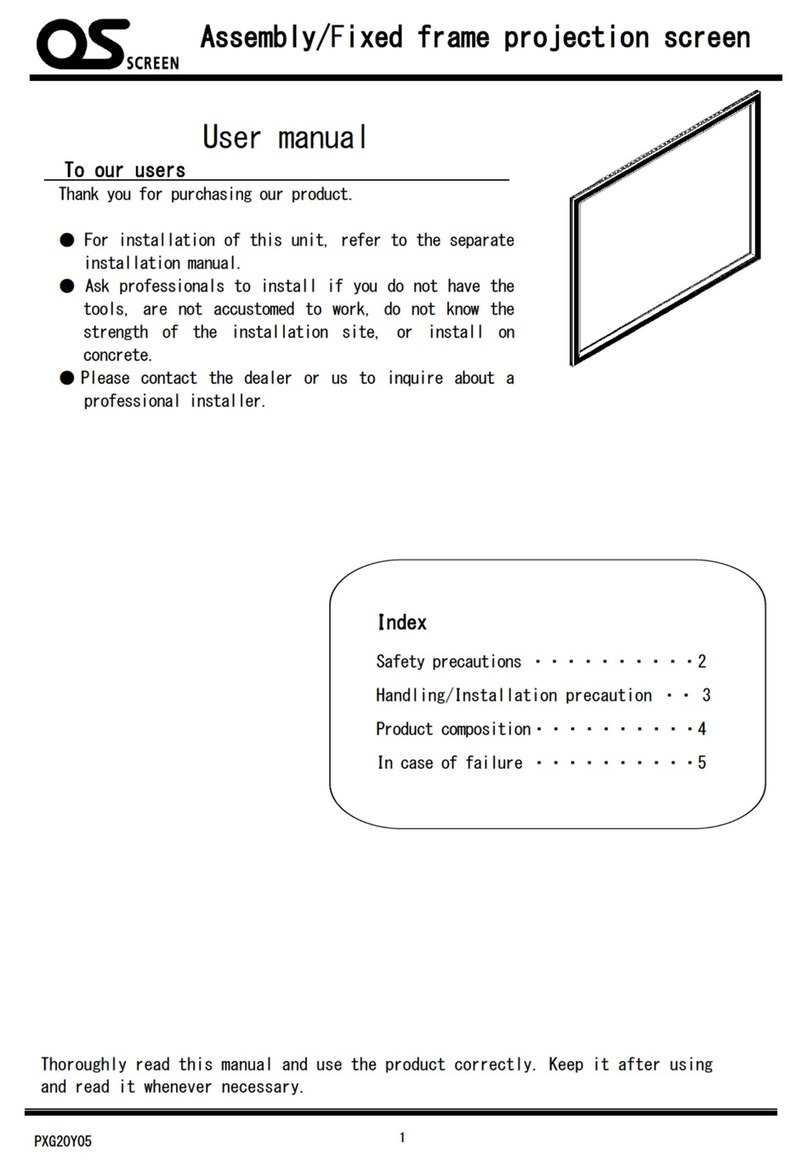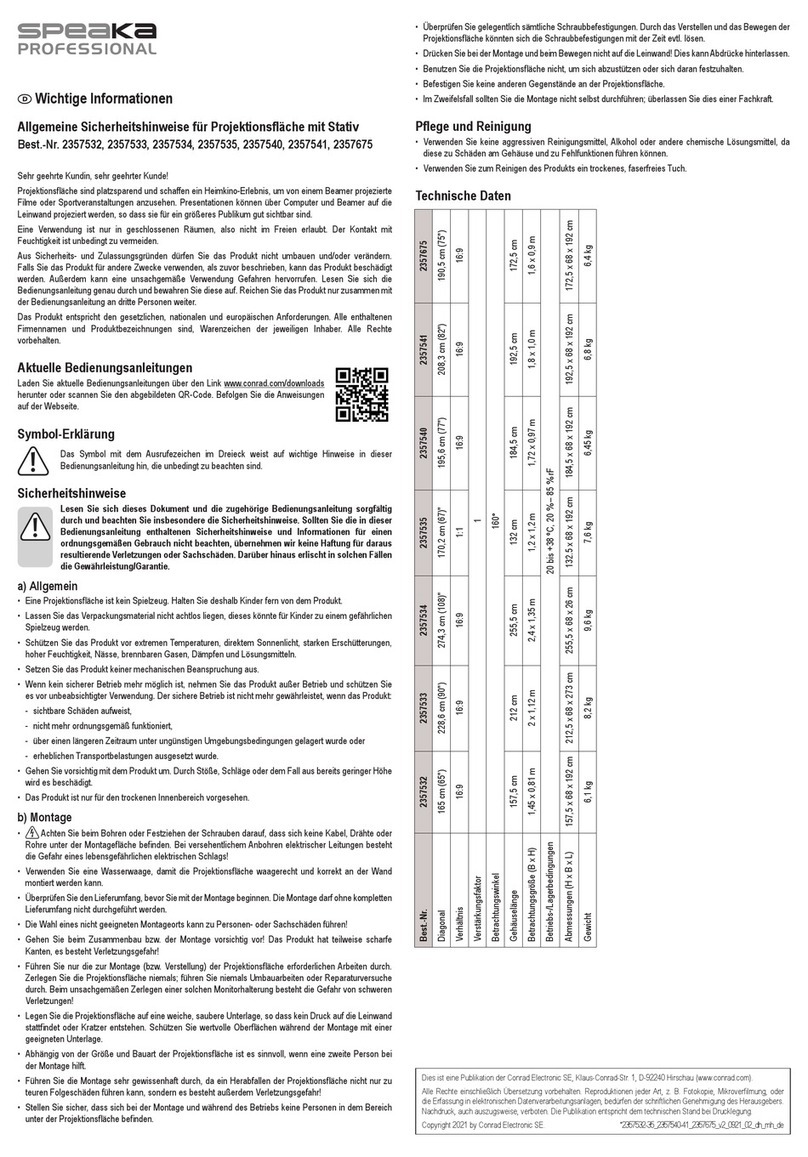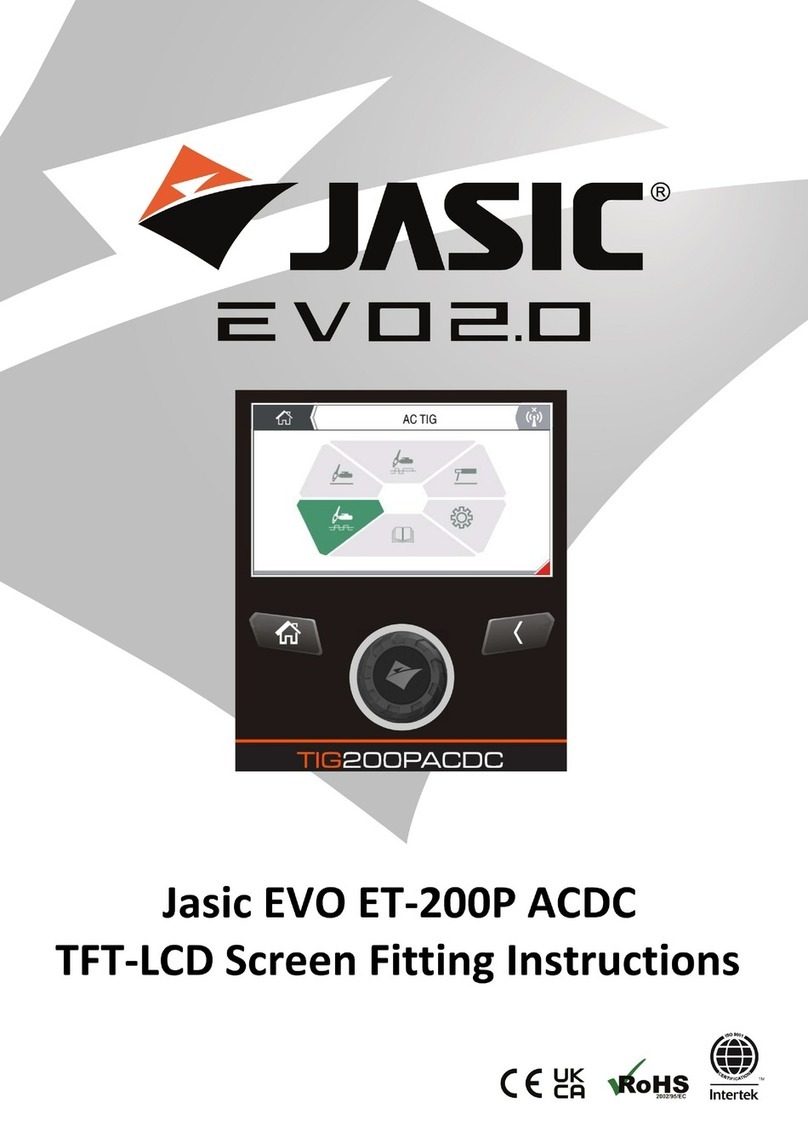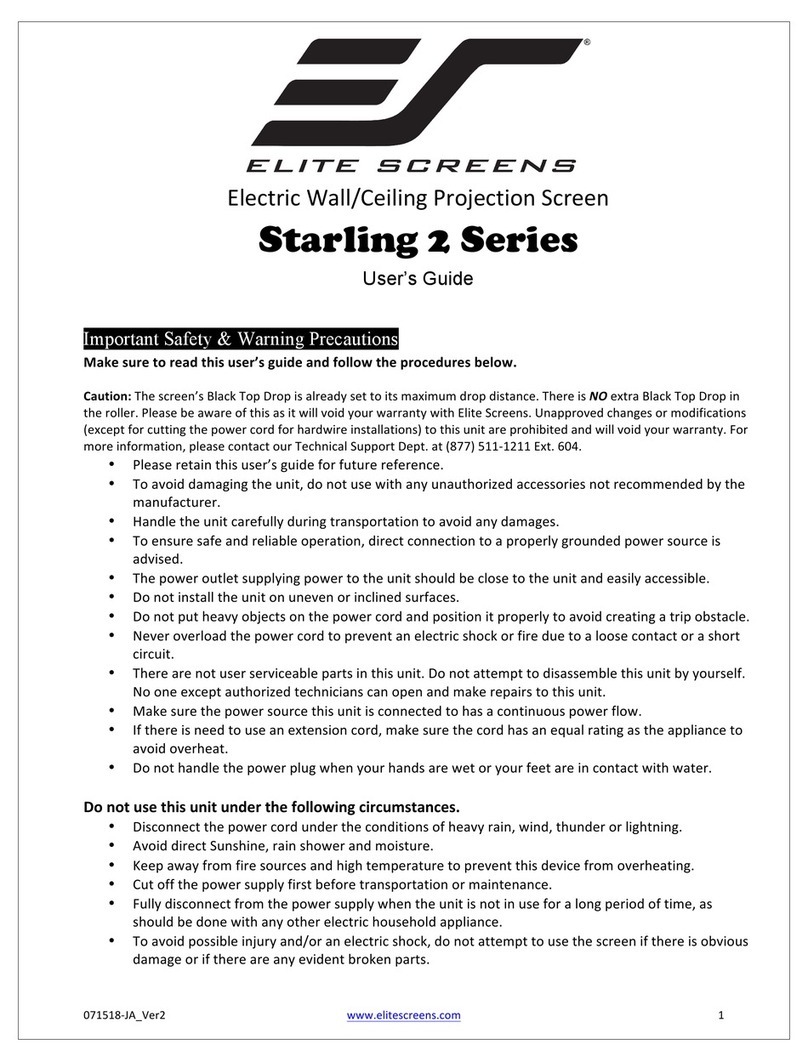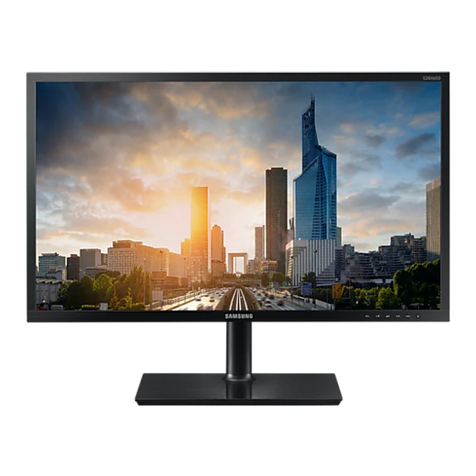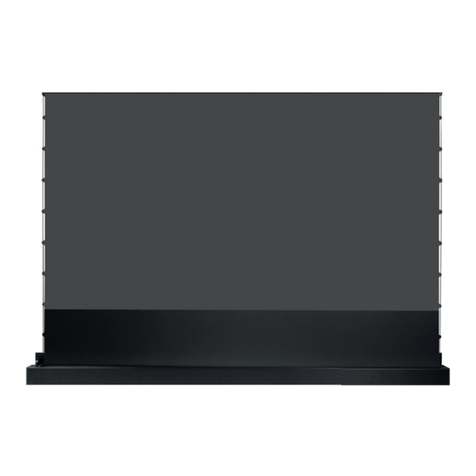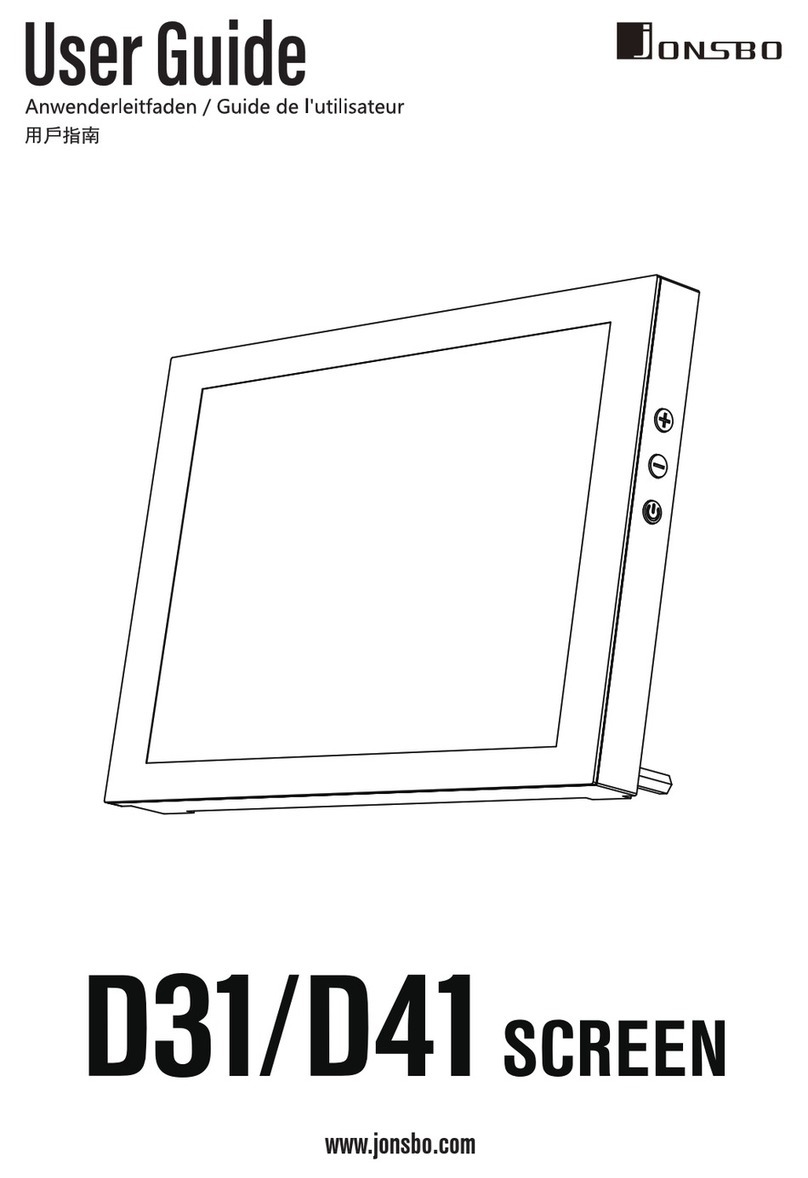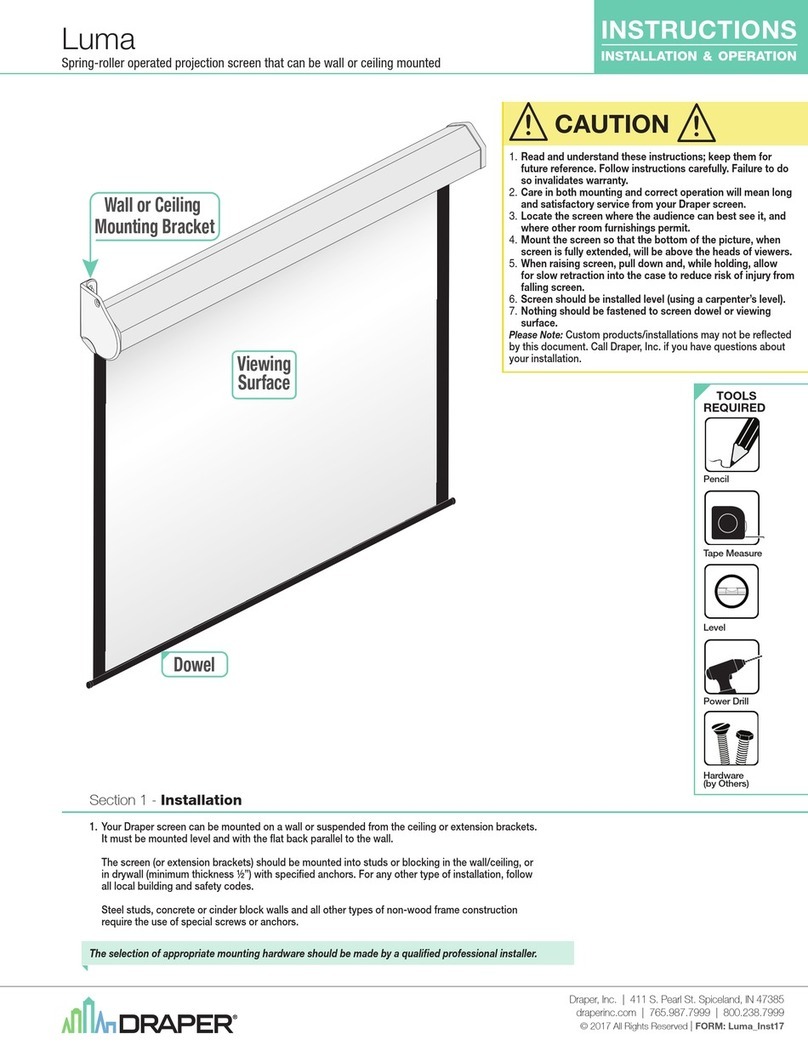remote controller or by an electrical control system interface. The suitable motor torque is selected according to
the type of fabric and its relative weight.
Cord guiding: Cord guides for a 19-strand cord, Ø 4 mm, made from stainless steel (AISI 316), together with a
pressed-in tightening stainless steel end piece and AISI 316 stainless steel bracket for wall mounting. End pieces
of the lower weighting section are attached to the cord to reduce the roller blind movement (the fabric is not
guided).
GC20 guide bar: Extruded aluminium guide bars, which guide only the lower weighting section to reduce the
roller blind movement (the fabric is not guided).
M50 tubular motor 230 V/50 Hz with an upper/lower end switch and a supply cable, thermal disconnection and
IP44 protection rating. The switch is not part of the supply.
Or a clutch with a crank attached allowing function under various angles thanks to a Cardan clutch.
Extruded aluminium drum with a fabric-attachment slot.
Upper extruded-aluminium box with a removable cover and aluminium side boards.
Lower extruded-aluminium section with a weight and PVC terminal covers.
Fabric –the fabric used is coated or laminated for greater stiffness, facilitation of installation to the winding drum
and provision of proper winding, as well as for better fabric flatness.
4. GENERAL SAFETY REQUIREMENTS
The installation and wiring of the roller blind may only be carried out by qualified and authorised personnel. Any
intervention, however small, in the power supply requires a qualified electrician. Faulty wiring, faulty installation and any
repairs, adjustments or alterations made by any unauthorised personnel shall result in the loss of guarantee. We
recommend using solely original accessories and spare parts. Our roller blinds are intended only for the use of original
accessories.
DURING INSTALLATION
Installation may be carried out solely by qualified personnel while observing these rules.
Prior to installation, it is necessary to check the workplace for the presence of any electric wiring and stipulate
necessary safety measures to prevent both direct and indirect contact with live components.
If the installation requires that the mechanician work at heights exceeding 2 metres above the ground, it is
necessary to prevent losing the mechanician’s balance by safety measures, usually safety railing attached to all
open sides of the workplace (beam structures, platforms, terraces, scaffolding, balconies, etc.) or elevated
bridges. If the use of such measures is not possible, suitable individual protection equipment must be used. The
installation of scaffolding, platforms and elevated working areas must be carried out solely by qualified personnel
(specialised contractors) in accordance with valid regulations. Always use safety belts at scaffolding without
railing or in other dangerous situations.
In case of outdoor installations, power input of portable equipment must not exceed 230 V, and for the use in wet
or very wet environment or if in contact with large metallic objects, the power input must not exceed 50 V. Safe
voltage must be attained by using transformers corresponding to the European Norm IEC 14-6.
